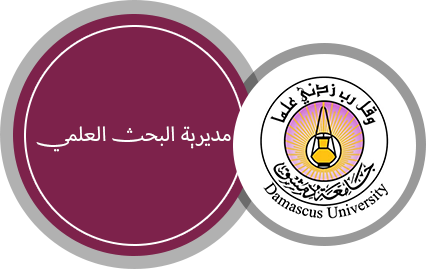- الرئيسية
- الأبحاث
- عناصر البحث العلمي
- مخرجات البحث العلمي
- خدمات
تعهد ملكية فكرية لجامعة دمشق
منشورات توجيهية متعلقة بالبحث العلمي
المجلات المعتمدة للترفيع الأكاديمي
المحتو ى العربي للمجلات المدرجة في مؤسسات التصنيف العالمية
إعلانات استقبال طلبات الدعم المالي من صندوق دعم البحث العلمي وزارة التعليم العالي والبحث العلمي
خدمة الانترنت ADSL
دليل اخلاقيات البحث العلمي العربي واخلاقيات الذكاء الاضطناعي
دليل الباحث لإجراء بحث علمي تنموي المعد من قبل الهيئة العليا للبحث العلمي
ربط الجامعة بالمجتمع
كتيب إجراءات القيد والتسجيل للماجستير والدكتوراه في جامعة دمشق
دليل تفعيل البريد الإلكتروني لحساب الباحث على Google Scholar
توصيف البطاقات البحثية المقترحة من صندوق الأمم المتحدة للسكان
تحميل دليل كتابة الأطروحة الجامعية
تحميل استمارات
رابط طلب الحصول على بريد الكتروني رسمي بلاحقة جامعة دمشق
منهجيات البحث العلمي
(Climate Action Plan (CAP
حماية الملكية الفكرية
مواقع مهمة
- أخلاقيات الأبحاث الطبية
- النشر الدولي
- اتصل بنا
آخر الأخبار
Comparison Study Between Cherry and ArabicGumsin Preparation and Characterization of Orange Peels Extract Nano Capsules
|





